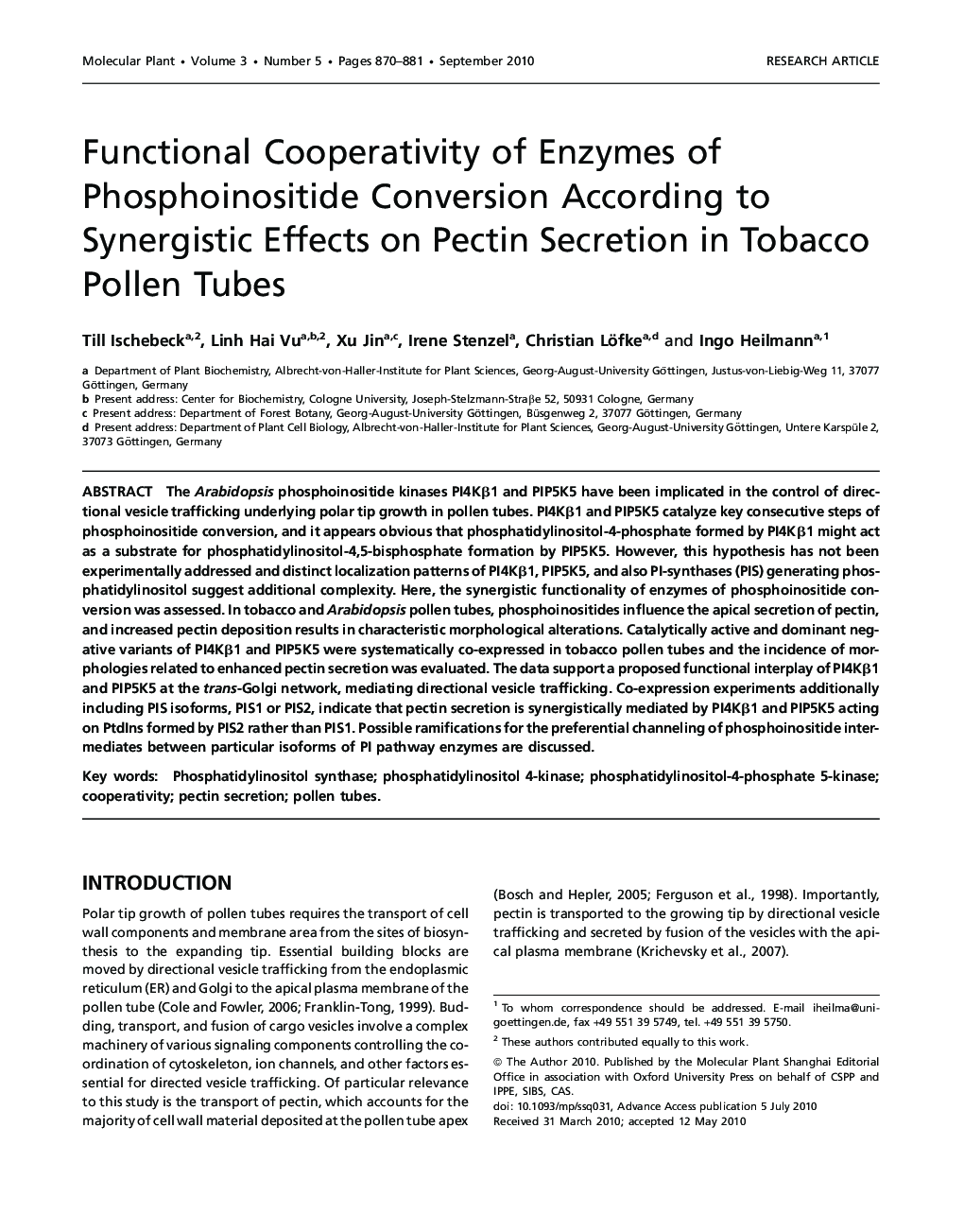| Article ID | Journal | Published Year | Pages | File Type |
|---|---|---|---|---|
| 4570719 | Molecular Plant | 2010 | 12 Pages |
ABSTRACTThe Arabidopsis phosphoinositide kinases PI4Kβ1 and PIP5K5 have been implicated in the control of directional vesicle trafficking underlying polar tip growth in pollen tubes. PI4Kβ1 and PIP5K5 catalyze key consecutive steps of phosphoinositide conversion, and it appears obvious that phosphatidylinositol-4-phosphate formed by PI4Kβ1 might act as a substrate for phosphatidylinositol-4,5-bisphosphate formation by PIP5K5. However, this hypothesis has not been experimentally addressed and distinct localization patterns of PI4Kβ1, PIP5K5, and also PI-synthases (PIS) generating phosphatidylinositol suggest additional complexity. Here, the synergistic functionality of enzymes of phosphoinositide conversion was assessed. In tobacco and Arabidopsis pollen tubes, phosphoinositides influence the apical secretion of pectin, and increased pectin deposition results in characteristic morphological alterations. Catalytically active and dominant negative variants of PI4Kβ1 and PIP5K5 were systematically co-expressed in tobacco pollen tubes and the incidence of morphologies related to enhanced pectin secretion was evaluated. The data support a proposed functional interplay of PI4Kβ1 and PIP5K5 at the trans-Golgi network, mediating directional vesicle trafficking. Co-expression experiments additionally including PIS isoforms, PIS1 or PIS2, indicate that pectin secretion is synergistically mediated by PI4Kβ1 and PIP5K5 acting on PtdIns formed by PIS2 rather than PIS1. Possible ramifications for the preferential channeling of phosphoinositide intermediates between particular isoforms of PI pathway enzymes are discussed.
